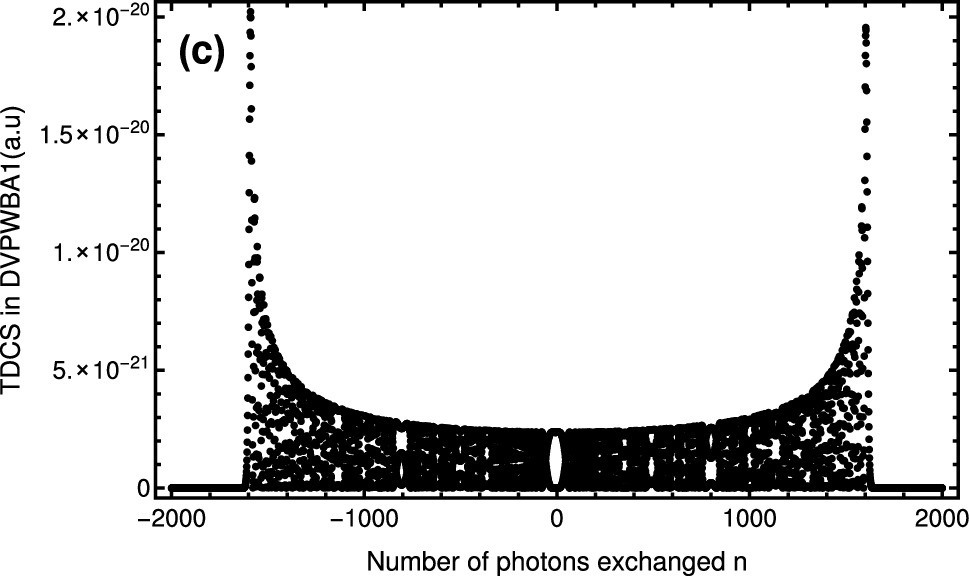https://doi.org/10.1140/epjd/s10053-024-00866-y
Regular Article - Atomic Physics
Laser-assisted relativistic ionization of the metastable atomic hydrogen H(2S) by electron impact in the coplanar binary geometry
1
Polydisciplinary Faculty, Laboratory of Research in Physics and Engineering Sciences, Team of Modern and Applied Physics, Sultan Moulay Slimane University, 23000, Beni Mellal, Morocco
2
Laboratoire de Physique des Matériaux et Subatomique, University Ibn Tofail, 14000, Kenitra, Morocco
Received:
7
February
2024
Accepted:
16
May
2024
Published online:
13
June
2024
In this paper, we present a detailed analytical computation of the triple differential cross section, in the first Born approximation, for the relativistic electron-impact ionization of the metastable atomic hydrogen H(2S) in the symmetric coplanar geometry and in the presence of a circularly polarized laser field. We introduce as a first step the Dirac–Volkov plane wave Born approximation 1 where we take into account only the relativistic dressing of the incident and scattered electrons. Then, we introduce the Dirac–Volkov plane wave Born approximation 2 where we take totally into account the relativistic dressing of the incident, scattered and ejected electrons. This paper is an extension of the previous one (Jakha et al. in Chin J Phys 77:1048, 2022), where we studied the same process in the absence of any external field. The combination of these two complementary works can provide a thorough and comprehensive study that can pave the way for any future experimental investigation.
Copyright comment Springer Nature or its licensor (e.g. a society or other partner) holds exclusive rights to this article under a publishing agreement with the author(s) or other rightsholder(s); author self-archiving of the accepted manuscript version of this article is solely governed by the terms of such publishing agreement and applicable law.
© The Author(s), under exclusive licence to EDP Sciences, SIF and Springer-Verlag GmbH Germany, part of Springer Nature 2024. Springer Nature or its licensor (e.g. a society or other partner) holds exclusive rights to this article under a publishing agreement with the author(s) or other rightsholder(s); author self-archiving of the accepted manuscript version of this article is solely governed by the terms of such publishing agreement and applicable law.





